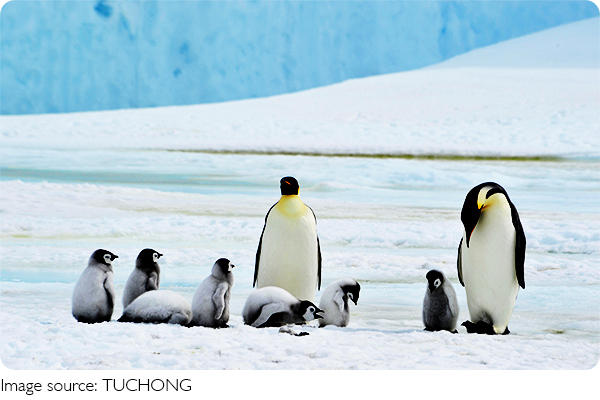Solo Antarctic Trek

Antarctica, one of the seven continents on Earth, surrounds the South Pole and is characterized by the Southern Ocean.
It comprises a mainland, ice shelves along the coast, and various islands, with a total area of 14.25 million square kilometers.
The mainland covers 12.393 million square kilometers, the coastal ice shelves cover 1.582 million square kilometers, and the islands span 76,000 square kilometers. Antarctica is a vast plateau with an average elevation of 2,350 meters, making it the continent with the highest average elevation globally.
Glaciers predominantly cover the continent, accounting for over 80% of the world's modern ice cover. Glaciers extend from the central region to the sea, forming massive ice shelves such as the Ross Ice Shelf, surrounded by drifting icebergs.
Gustave Eiffel's iconic tower was born from innovation and financial challenges.
System interchanges optimize traffic flow, providing efficient three-dimensional connections for complex road networks.
Turbulent skies, safe flights: thunderstorm challenges and aviation innovations.
Preserving the Ocean: Safeguarding Earth's Lifeblood.
Sailboats: From Nile's embrace to modern joy, wind's dance guides timeless voyages.
Autumn leaves changing earlier signals potential challenges for climate change adaptation strategies.
Only 2% of Antarctica is free from year-round ice and snow cover, allowing for the existence of flora and fauna. The climate is frigid, with record low temperatures reaching -89.2°C (1983). Winds can reach speeds of 17-18 meters per second on average, with gusts exceeding 90 meters per second, making it the coldest and windiest land on Earth with frequent storms.
The continent experiences an annual average precipitation of 55 millimeters, with minimal rainfall near the poles, contributing to its "White Desert" title due to arid air.
Within the Antarctic Circle are continuous polar days during the warm season and polar nights during the cold season, accompanied by spectacular auroras. The region is home to diverse wildlife, including penguins, seals, sea lions, and albatrosses. The surrounding oceans are rich in Antarctic cod and toothfish, with the most significant krill production globally.
Mineral resources such as coal, oil, natural gas, gold, silver, nickel, molybdenum, manganese, iron, copper, and uranium have been discovered, mainly concentrated in the Antarctic Peninsula and coastal islands.
Contrary to the common perception of Antarctica as a remote and isolated white continent, separated from our green world by vast distances, global scientific exploration activities have revealed its crucial relevance to human existence and development. Over the past 200 years, persistent efforts and deepening exploration have highlighted Antarctica's significance.
On December 26, 2018, 33-year-old American explorer Colin O'Brady successfully traversed the Antarctic continent without external supplies or assistance, becoming the first person to accomplish this. This achievement occurred 107 years after Roald Amundsen first set foot on the South Pole. The mysterious ice-covered plateau of Antarctica continues to captivate explorers who follow in O'Brady's footsteps.
As early as the 4th century BCE, the ancient Greek philosopher Aristotle speculated about the Antarctic continent, mentioning the concept of the "Antarctic region" in his work "Meteorology" and referring to it as the "unknown southern continent." Around 150 CE, Greek astronomers and geographers marked this "unknown southern continent" at the southernmost tip of world maps.
However, this land at the world's edge remained in the human imagination for centuries. It wasn't until the 16th century, with the advent of the Age of Exploration in Europe, that Antarctica re-entered people's discussions.
Captain James Cook, a legendary British navigator, led an expedition that achieved the first human crossing of the Antarctic Circle at the end of the 18th century. Unfortunately, he did not personally witness the mysterious ice and snow continent. This southern land deeply attracted human imagination about distant places throughout the more than two millennia preceding this.
It wasn't until 1895 that Norwegian explorer Carsten Borchgrevink led a small expedition to explore the Antarctic coast. Encountering ice floes that trapped them, they struggled to climb onto land near the entrance to the Ross Sea, becoming the first humans to land on Antarctica in practice. Borchgrevink and his team hunted seals and penguins for sustenance that winter, successfully overwintering on the Antarctic continent, becoming the first humans to spend a winter there.
Over the next 20 years, spurred by the 6th International Geographical Congress call in August 1895 to "most effectively promote Antarctic exploration," Antarctica became a playground for explorers worldwide. The race for exploration rights over Antarctica became a global strategic competition for various countries, including the United Kingdom, France, Sweden, Norway, and others, sending expeditions to conquer the Antarctic continent.

During this period, in 1903, Dr. William Speirs Bruce led the Scottish National Antarctic Expedition to Antarctica, successfully establishing the first permanent Antarctic research station. From 1904 to 1909, explorers Mawson, Davis, and McKay reached the South Magnetic Pole at the coordinates of 72°24'S and 155°18'E. On December 14, 1911, and January 17, 1912, Norwegian explorer Amundsen and British explorer Scott, leading separate expeditions, reached the South Pole.
Thus, humanity conquered the Antarctic continent.

 · News team
· News team